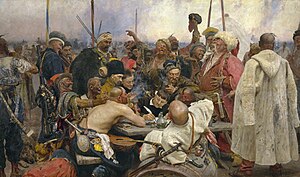Rasmi: Difference between revisions
Jump to navigation
Jump to search
mNo edit summary |
m (Changed Sabaria, re-ordered by population) |
||
| Line 12: | Line 12: | ||
| total_ref = | | total_ref = | ||
| popplace = | | popplace = | ||
| pop1 = | | pop1 = | ||
| ref1 = | | ref1 = | ||
| | | region1 = {{flagicon image|Palia2.png}} [[Palia]] | ||
| | | pop1 = {{nowrap|2,459,000 - 3,000,000}} | ||
| ref1 = | |||
| region2 = {{flagicon image| Blaykish_Kingdom.png}} [[Blayk]] | |||
| pop2 = 623,080 - 710,000 | |||
| ref2 = | | ref2 = | ||
| region3 = {{flagicon image| | | region3 = {{flagicon image|Castelana_Flag.png}} [[Castelana]] | ||
| pop3 | | pop3 = 304,000 | ||
| ref3 = | | ref3 = | ||
| region4 | | region4 = {{flagicon image|RytheneFlag.png.png}} [[Rythene]] | ||
| pop4 = | | pop4 = 280,000 – 350,000 | ||
| ref4 = | | ref4 = | ||
| region5 | | region5 = {{flagicon image|TyrnicanFlag.png}} [[Tyrnica]] | ||
| pop5 | | pop5 = 189,126 – 203,000 | ||
| ref5 = | | ref5 = | ||
| region6 | | region6 = {{flag|Sabaria}} | ||
| pop6 | | pop6 = {{nowrap|112,451 - 150,000}} | ||
| ref6 = | | ref6 = | ||
| region7 | | region7 = {{flagicon image|Amandine_fed_flag.jpg}} [[Amandine]] | ||
| pop7 | | pop7 = 145,200 | ||
| ref7 = | | ref7 = | ||
| region8 | | region8 = {{flagicon image|SonghaFlag.png}} [[Songha]] ([[Jiasing]]) | ||
| pop8 | | pop8 = 10,000 | ||
| ref8 = | | ref8 = | ||
Revision as of 10:15, 30 September 2021
რასმი | |
|---|---|
 | |
| Total population | |
| 18.6–21.8 million (2020, est.) | |
| Regions with significant populations | |
| 2,459,000 - 3,000,000 | |
| 623,080 - 710,000 | |
| 304,000 | |
| 280,000 – 350,000 | |
| 189,126 – 203,000 | |
| 112,451 - 150,000 | |
| 145,200 | |
| 10,000 | |
| Languages | |
| Religion | |
| Aulaism | |
Rasmi (Khamli: რასმი) or Rasmeans are a religious group of numerous ethnic and linguistic descent, a traditionally a diasporic and itinerant nation. While they largely inhabit Auressia, there are significant populations in Marceaunia, and Isuan. They originate from, but are distinct to, the historical Argetians, who founded multiple city-states and polities across south-eastern Auressia.